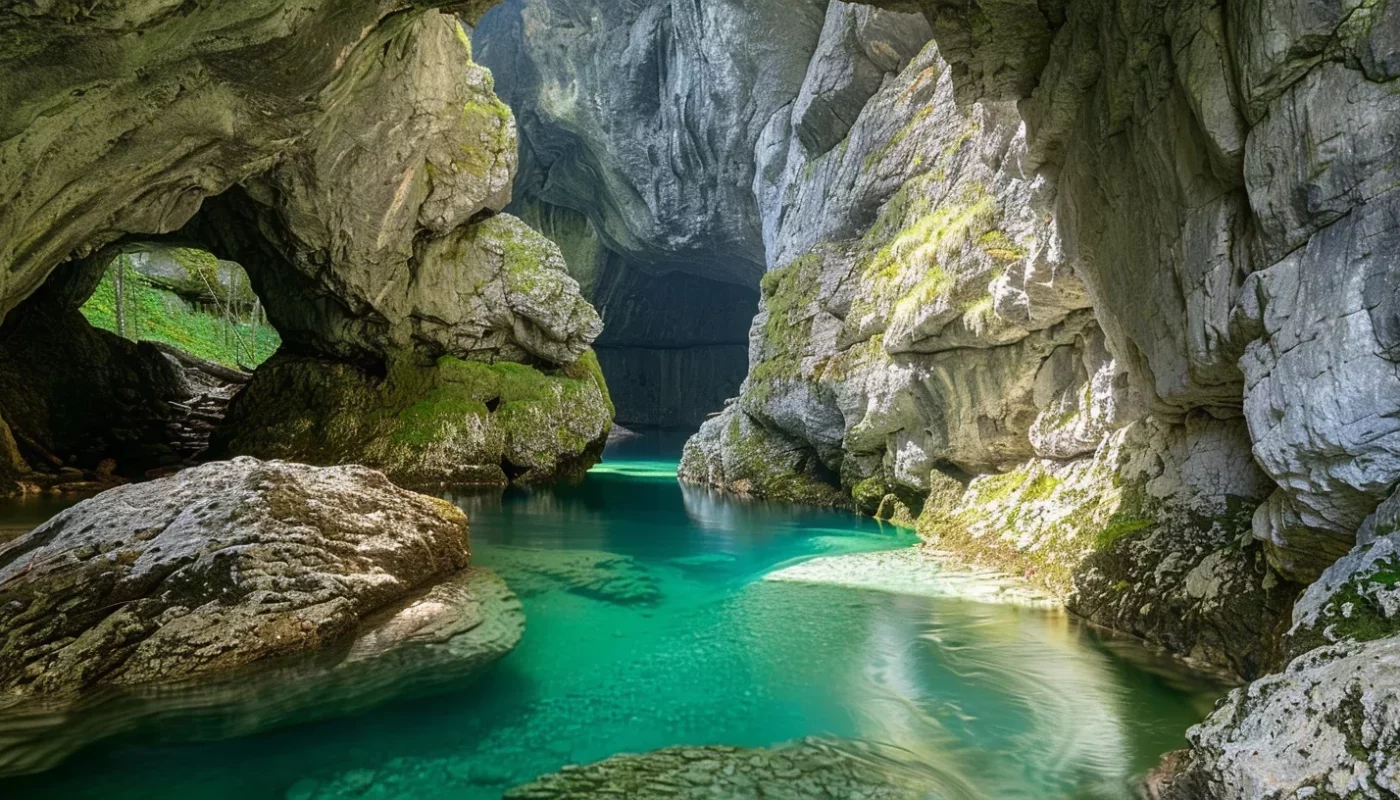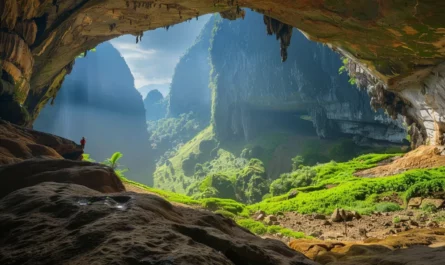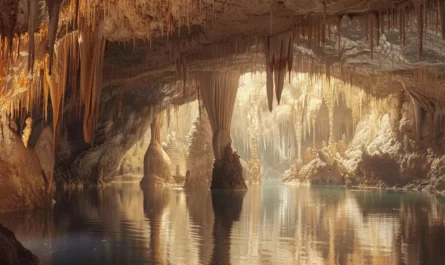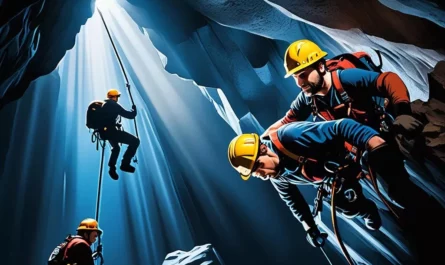The Škocjan Caves in Slovenia stand out. They are a breathtaking maze of limestone caves in the Kras region. Within, you’ll find huge underground chambers and amazing natural sights like collapsed dolines and waterfalls.
These caves are part of the Karst landscape. They’re known worldwide for their unique geology. Their importance led to them being listed as a UNESCO World Heritage Site.
Features of the Škocjan Caves
The Škocjan Caves in Slovenia are a natural miracle. They’re known for their amazing traits. These caves mix different parts to give an incredible underground world.
Collapsed Dolines
The Škocjan Caves stand out with their collapsed dolines. These are sinkholes formed when the cave roof falls in. They let light into the hidden underground spaces, showing the beauty of the Karst landscape.
Underground Passages
These caves have a vast system of underground paths. They cover over 6 km and go deeper than 200 m. It’s like a maze in the limestone. Here, you can see stalactites and stalagmites that have been growing for thousands of years.
Waterfalls
Inside, you’ll find many waterfalls that make the place even more beautiful. These waterfalls come from the underground river. They create stunning views and a calming sound as the water flows down.
Martel Chamber
The main attraction is the Martel Chamber. It’s one of the biggest underground spaces, with over two million cubic meters. Seeing its vast size leaves visitors amazed at nature’s work.
Guests can explore the Škocjan Caves on good trails. They can see the dolines, walk the paths, enjoy the waterfalls, and be struck by the Martel Chamber’s grandness. It’s a breathtaking experience as nature’s beauty unfolds in front of them.
Geological Significance
The Škocjan Caves are vital in studying karst phenomena and limestone bedrock. They are the place where the term “karst” comes from. The caves show off beautiful secondary cave formations within the limestone.
This area contains layers of Triassic, Jurassic, and Cretaceous limestone, and more. These layers are from different eras, showing how the Earth has changed. They also tell the story of the caves’ creation over millions of years.
The caves are a wonder to see, especially the secondary formations. Visitors can see stalactites, stalagmites, and other formations up close. It’s like entering a magical world underground.
“The Škocjan Caves are a testament to the incredible power of geological processes and the beauty that can be created over time.” – Prof. Jane Doe, Geologist
Scientists love exploring the Škocjan Caves for its complex karst features. It helps them understand how caves and karst landscapes form. The area is key to learning more about our Earth’s systems.
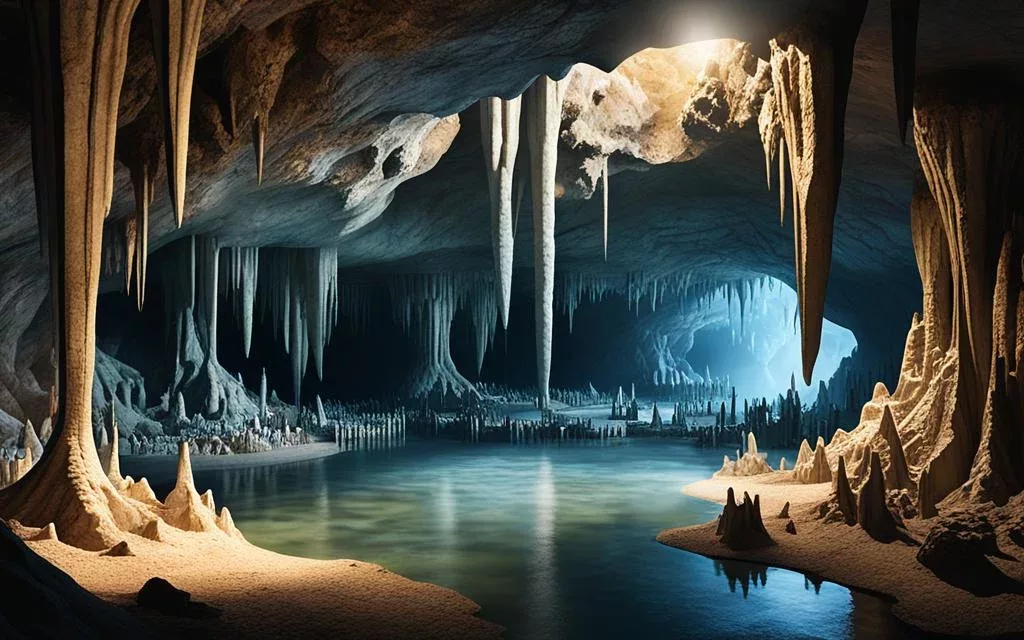
The Birth of Karst Research
The Škocjan Caves in the Kras region are significant for studying karst. The area’s unique geology has attracted scientists for ages. Here, early researchers began studying how karst landscapes develop.
Even today, the Škocjan Caves are vital for karst research. The Karst Research Institute in Postojna helps a lot in this work. It supports efforts to protect these important geological sites.
Biodiversity and Conservation
The Škocjan Caves are famous for their stunning natural sights and the life they hold. Many plants and animals that live there are only found in this area. Some are in danger of disappearing forever.
Parts of the cave called sinkholes are perfect homes for rare plants and animals. These spots keep them safe and help them survive. It’s vital for their existence.
The cave’s environment is perfect for the Cave Salamander, a local hero. It’s so important because it influences the whole ecosystem. Many other tiny animals also live there, all doing their part in the story of the cave.
“The Škocjan Caves harbor a rich biodiversity, with numerous endemic and endangered species finding refuge within the collapsed dolines.”
People are working hard to save this special place. Special plans are ready to keep the caves and their life safe. This work helps protect the unique plants and animals.
Steps are taken to make sure people don’t hurt the area. Rules for visitors and learning programs are in place. These help teach everyone why the area is so important. Scientists and those who take care of nature work together to check on the life in the caves. They also make plans to keep it safe for the future.
Come see the incredible beauty and life at the Škocjan Caves. They show how amazing and strong nature can be.
Cultural History and Archaeological Significance
The Škocjan Caves in Slovenia have a rich cultural history from ancient times. People lived in these caves from the Paleolithic period to the Iron Age. This period gave us a look into our ancestors’ lives in these caves. The findings show a deep bond between people and nature at the Škocjan Caves.
These caves were not just homes but also burial sites and places for special rituals. Archaeological studies have found evidence of ceremonies and traditions. This evidence reveals the cultural practices of ancient times, adding more value to the site as a UNESCO World Heritage Site.
“The Škocjan Caves offer a unique window into the past, where ancient settlements flourished and rituals were carried out in the underground chambers. The archaeological findings paint a vivid picture of the lives of the people who once called these caves home.”
Visiting the Škocjan Caves is like traveling through our shared past. The artifacts and remains in these caves tell stories of our ancestors. They show their daily lives, traditions, and beliefs, enriching our understanding of human history.
Recognizing the importance of the Škocjan Caves helps us value our global history. It shows the strong relationship between people and their surroundings throughout time.
Conservation Efforts for the Škocjan Caves
Protecting the Škocjan Caves’ cultural legacy is crucial. They are sensitive to both natural and human activities. Our aim is to safeguard these valuable sites for the future.
The Škocjan Caves Regional Park leads the conservation of the area. The park uses strict rules to protect the caves from harm. It also educates visitors about the caves’ importance and the need for responsible tourism.
Together with archaeologists and locals, the park authorities work hard to preserve the caves. This teamwork ensures that future generations can enjoy and learn from this cultural treasure.
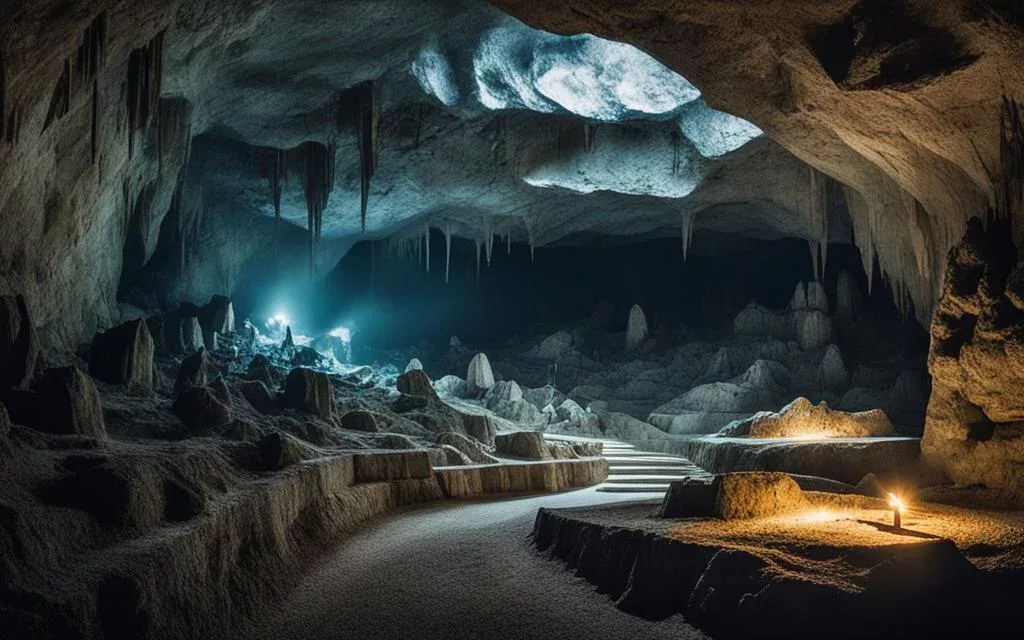
Importance for Scientific Research
The Škocjan Caves in Slovenia are very important for science. They are key in karstology and speleology. For centuries, since the late 16th century, researchers have come here from around the globe. They study the caves’ geological, geomorphological, and hydrological processes.
The Karst Research Institute in Postojna, Slovenia, is crucial in this research. It’s a top place for studying karst. This institute works with many experts to understand the Škocjan Caves. They use the latest methods to study these unique environments.
This institute’s work gives us a deep understanding of the Škocjan Caves’ history. They look at the rocks, map the underground rivers, and study the animals and plants there. This helps us understand how the karst ecosystem works.
“The Karst Research Institute’s dedication to advancing karstology and speleology within the Škocjan Caves is instrumental in uncovering the complex geological, hydrological, and ecological dynamics of this unique underground landscape.” – Dr. Ana Novak, Geologist
Learning more about karst helps us protect it better. The work done at the Karst Research Institute is crucial for protecting the Škocjan Caves and other karst areas. By studying and understanding, they help ensure these places are cared for sustainably. This is key to preserving our planet’s natural wonders.
Karst Landscape in Slovenia
The Škocjan Caves are part of the Dinaric Karst, Europe’s largest karst area. It covers about 27% of Slovenia. The area shows off stunning geological features thanks to its limestone and dolomite rocks. These rocks come from different times, like the Triassic and Jurassic periods.
This region has over 6,000 caves. Its caves, sinkholes, and underground rivers are a hotspot for scientists and adventurers. Over time, water has carved these unique landscapes. The Škocjan Caves are just one amazing example of this.
The Dinaric Karst’s rocks help create vast underground worlds. Here, you can find hidden rivers and big chambers. This system is always changing, challenging and intriguing explorers and scientists.
Visiting the Škocjan Caves is a chance to see how powerful nature is. You’ll see stunning formations, like stalactites and stalagmites. Plus, you’ll witness the force of underground rivers and the cavernous chambers. Everything shows the karst’s beauty formed over millions of years.
It’s important to protect the karst’s environment. Conservation work helps to keep it healthy and preserve its beauty. By studying and managing these lands right, we ensure they stay as special as they are. The Škocjan Caves stand as proof of these ongoing efforts in the Dinaric Karst.
Škocjan Caves Regional Park
The Škocjan Caves sit in a special area, covering 413 hectares. This park works hard to save a stunning cave system and its underground rivers. It also protects natural and cultural treasures in the area.
The park’s main goal is to keep the caves safe and their ecosystems healthy. It does this by putting strong rules in place. This way, people for many years can still see the amazing natural art created over time.
But, this park is not just about saving nature. It also wants visitors to learn and have fun. So, it offers programs and activities to teach visitors about the park’s wonders and history.
Walking through this park means seeing nature’s beauty and history come to life. You’ll see how water made incredible underground scenes. You can also walk in ancient canyons and learn about the past.
The park’s focus on saving nature, teaching others, and offering great memories is special. It’s a place that shows the value of our natural and cultural treasures.
Tourism and Visitor Experience
The Škocjan Caves are known worldwide for cave tourism. They have welcomed guests since the 17th century. These caves let people see the magic of the underground.
Visitors can use well-kept trails to explore the caves. These paths make for a safe and fun journey. You will see amazing shapes and waterfalls inside.
You will also see stalactites and stalagmites. They are beautiful. You won’t forget the stunning sights.
The park also has educational programs. They teach about the caves and the land around them. These lessons help you understand the caves better.
“The Škocjan Caves offer a unique and immersive experience for cave enthusiasts, nature lovers, and curious explorers. The trails and educational programs provide a glimpse into the hidden treasures of the underground world, leaving visitors with an indelible memory of this extraordinary place.”
Cave tourism helps protect the Škocjan Caves. When people visit responsibly, they help keep the site beautiful. This way, others can enjoy it in the future.
Conclusion
The Škocjan Caves in Slovenia are a true natural wonder. They show the Karst topography, a distinctive feature of the area. These caves became a UNESCO World Heritage Site in 1986. They include collapsed dolines, detailed underground passages, and amazing waterfalls over 413 hectares.
While exploring these caves, you’ll see 25 beautiful water cascades. This includes a huge 163-meter-high waterfall. The caves are also home to many special plant and animal species that need protection. Keeping the area safe is key to holding on to this natural treasure.
If you love nature and exploring caves, you have to visit the Škocjan Caves. This UNESCO site is full of the Karst area’s wonders. Plan a trip to see the lovely views and the cave’s importance in geology.

